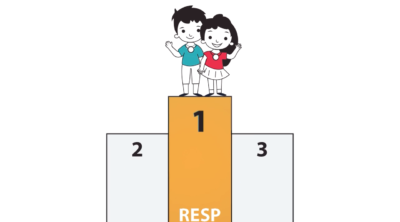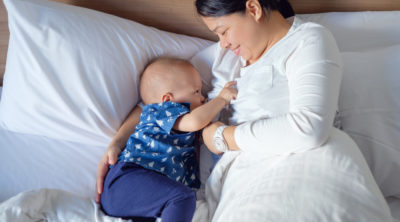As you prepare yourself for the arrival of your new baby, you probably talked to a hundred moms around you asking what the experience of giving birth and beyond is like. And probably most of the answer was that the postpartum phase is one of life’s most challenging (albeit fulfilling) milestones. Of course, nothing compares to the warm fuzzy feeling that comes with getting to hold your new baby. But as the body heals from the pregnancy and puts everything back in order, changes are afoot and the journey is not for the faint of heart.
This article will talk about how you can easily “go with the flow” during the postpartum period. So let’s talk all about lochia, cramps, comfy washable pads and everything in between. Let’s get started!
How long is the postpartum period?
The postpartum period is the period after birth when a woman’s body heals from the pregnancy term and normalizes once again. This starts immediately after the delivery of the baby but there are three stages to it:
- The initial phase – this is the first 6 – 12 hours after the baby is delivered
- The subacute postpartum period – this can last up to 2-6 weeks
- The delayed postpartum period – this can last up to 6 months
Now that we have the main terminology covered, let’s answer the next burning question…
Is postpartum bleeding right after delivery considered a menstrual period?
The short answer for this is no. Right after delivery, a new mom may experience postpartum bleeding wherein a vaginal discharge called “lochia” leaks out. This discharge contains blood, mucus, and other tissues that were needed in the uterus during the pregnancy.
For the first three days, lochia would typically be dark red. A few small blood clots, no larger than a plum, is normal. After this stage, the lochia will change in colour, turning pink to brown and finally creamy or yellowish until it stops completely.
It might sound scary and even gross but postpartum bleeding is completely normal and healthy! You can stay comfortable at this time with one of hannahpad’s overnight washable pads.
When will I get my first menstrual period after childbirth?
After the postpartum bleeding has stopped, good news—your menstrual periods won’t be back for a while. The schedule of your first menstruation after childbirth relies heavily on a hormone called prolactin, which delays ovulation and menstruation. What increases Prolactin in your body? Breastfeeding.
So now, let’s talk about average time frames. If you don’t breastfeed at all, the first postpartum menstruation could start at 4-8 weeks after childbirth. If you breastfeed and formula-feed (which means the occurrence of breastfeeding is less), it could take weeks to months. And if you breastfeed exclusively (hence more times), the onset could take even longer.
What are postpartum menstrual periods like?
One thing to remember is that the body is still healing – especially within the first 6 weeks after pregnancy. One bodily change is that the uterine cavity becomes larger after pregnancy – this increases the surface area of the uterine lining that needs to be shed during menstruation. Moreover, hormonal changes would have taken over. These two main factors can change how you experience menstruation for a while. In most cases, your period may go back to normal over time – but before it does, here are a few common irregularities you might experience:
- Your period is heavier
- There are more clots
- The colour of the blood is different
- Your cramps are more painful
- Periods can be irregular
When it is NOT OKAY – Red Flags to Watch Out For
Even though the postpartum period can get intense with heavier menstrual flows, cramping, and irregular periods, there are some symptoms you must not ignore. If you experience any of the following, it would be best to consult your doctor as these are signs of a possible infection.
- Excessive bleeding – soaking through more than one pad every hour
- Bleeding that follows sudden and severe pain
- Blood clots bigger than a softball
- Foul-smelling discharge around the c-section incision or perineal tear
- Foul-smelling vaginal discharge
- Internal pain or burning sensation when you pee and/or pain in your lower
- backside
- Severe headache
- Trouble breathing
What menstrual products can I use during my postpartum period?
The menstrual care products you’ll need must be comfortable, hygienic, and packs an extra punch in absorption!
Cotton Postpartum Washable Pads
These will literally be your best friend during your postpartum bleeding and postpartum period menstruation. The extra padding will help soothe a sore perineum, especially during the first few days. And since these don’t need sticky wings to cling to your underwear, you will also avoid the painful instances of adhesive stuck to your extra-sensitive lady parts. And what’s even better with these are that you can make your padsicles with them! Just spray some witch hazel onto the cloth pads and freeze them up for use later. Some of you may be like, “Whaaat?”, but trust me. You’ll thank me later.
Mesh Panties
Many women rave about this product and consider it as a postpartum period must-have. Mesh panties can provide added support while not being too tight on your sensitive areas, especially during such a time when everything down there is sore. The last thing you need is super tight underwear! These are also perfect as an added barrier for really heavy bleeding.
What menstrual products should I think about staying away from postpartum?
There are also products you may want to avoid.
Disposable Postpartum Pads
Save yourself the pain and frustration. Disposable postpartum pads are flimsy and less absorbent. And let’s not forget about the adhesive wings – these can give you hell if they shuffle and stick to your extra-sensitive and sore parts. A major OUCH!
To top it all off, these products could contain irritants. And because of the plastic linings some disposable postpartum pads have, they lock in moisture. This is good news for bacteria – but not for you.
Tampons and Menstrual Cups
One word: infection. As these products are highly invasive and abrasive, they shouldn’t be options at all. You would need to stay away from these products especially within the first 6 weeks or before having the doctor’s go signal.
But wait… what about cleaning your washable pads?
In the above section, we mentioned the use of washable pads in postpartum sizes and how it gives you a whole heap of benefits and comfort during your postpartum period. But then comes the burning question: what is the easiest and most effective way to wash them?
It is an unenviable task for sure, but here are some easy tips to make sure your reusable pads stay clean and hygienic during your postpartum period:
- Store them in waterproof bags – this will keep the pads extra hygienic. Right after washing and drying, you can put them in ziplock bags to keep them fresh until use.
- No soaking – soaking the pads for long periods of time is not only bad for the pad, but it also encourages the growth of bacteria. Right after using a pad, make sure to place them in a wet bag that you can zip up until you’re ready to wash them.
- Treat any stains on your washable pads. We always recommend using Sodium Percarbonate, which is an oxygen-based cleaner like Oxyclean or Nellie’s Oxygen brightener. We do not recommend using peroxide as a stain-removal technique as it can very badly damage your bad if used with the wrong concentration.
- Wash the pads in a 60 degree cycle – this is the optimal temperature for killing germs. Don’t use fabric softener – this can be irritating to your sensitive parts so make sure to steer clear.
Sodium Percarbonate is what we always recommend, which is oxygen based cleaners like Oxyclean or Nellie’s Oxygen brightener.
Everything You Need For Your First Period After Giving Birth
You’ve got enough on your mind as a new mom without having to worry about if your period products are healthy for you. The Brand Hannah offers a wide selection of washable pads that are suitable to every kind of period. Our products are a hygienic, sustainable alternative to disposable menstrual products without all the added chemicals.
While you’re waiting for your body to get back on your typical cycle, consider switching to hannahpads! You won’t regret it.


